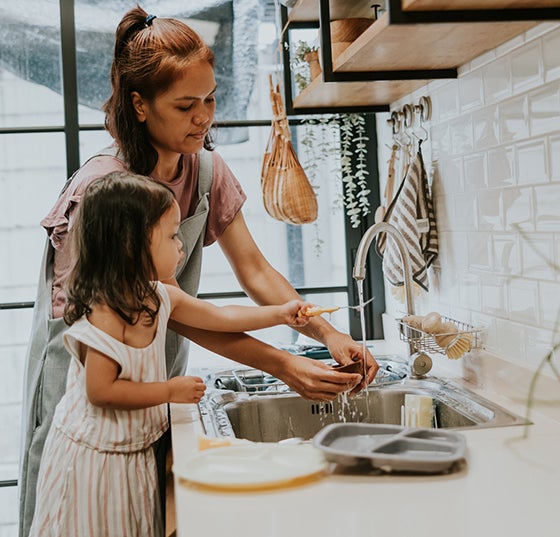
A UC Riverside-led study has found that a smartphone app that tracks household water use and alerts users to leaks or excessive consumption offers a promising tool for helping California water agencies meet state-mandated conservation goals.
Led by Mehdi Nemati, an assistant professor of public policy at UCR, the study found that use of the app—called Dropcountr—reduced average household water use by 6%, with even greater savings among the highest water users.
Dropcountr works by interpreting water-use data from smart water meters, which many utilities originally installed for remote reading to streamline billing. The app turns data from these meters into real-time feedback for consumers, showing how much water they use, how their usage compares to similar households, and how it has changed over time.
This type of digital feedback gives users what behavioral economists call a “nudge”—a timely prompt to take water-saving actions, such as taking shorter showers, fixing leaks, or delaying using appliances like dishwashers and washing machines until they are full.
The app also alerts users when their consumption nears costly higher-rate tiers and notifies them of possible leaks. Utilities also can use the app to send customers tips for cutting use and notify them of rebate programs, such as those for replacing lawns with drought-tolerant landscaping.
“California water agencies are under pressure to hit individualized water-use targets and conservation goals under the ‘Making Conservation a California Way of Life’ regulation,” Nemati said. “Our study shows that this digital feedback tool can be a powerful, low-cost way to help households manage their use and reduce consumption.”
The research focused on the City of Folsom in Northern California, where Dropcountr was offered to residential customers beginning in late 2014. About 3,600 households volunteered for the program, which collected smart meter data from 2013 to 2019. This allowed researchers to analyze more than 32 million records of daily water use.
The findings, published in the journal Resource and Energy Economics, showed that participating households reduced their daily consumption by an average of 6.2% compared to a control group. The reduction was greater among high-volume users. The top 20% of users cut their water use by up to 12%.
“This is a crucial outcome when every drop counts,” Nemati said. “We found strong, statistically significant reductions, especially for high-use customers.”
Dropcountr also uses behavioral science concepts, especially the power of social norms. Users receive personalized water-use summaries that show how their consumption stacks up against more efficient nearby households, helping them set reasonable and achievable conservation goals.
The app also flags possible leaks by detecting continuous usage patterns—such as when water use remains steady for 72 hours. These alerts were found to be especially effective: Water use dropped roughly 50% on the day after a leak alert was sent, followed by a 30% drop the next day, and a sustained 9% reduction even six days later.
“The sharp drop suggests customers are paying attention and acting quickly,” Nemati said. “One major advantage is that they can detect leaks right away—sometimes before they cause damage or result in costly bills. That’s difficult with traditional billing systems, where usage is only seen after 30 or 60 days.”
Importantly, the study also found that these behavioral changes lasted. “We looked at water use 50 months out and still found sustained reductions,” Nemati said. “People weren’t just reacting once and forgetting. They stayed engaged.”
The app works best with homes equipped with smart meters, while many homes in California still rely on older, manually read meters. Fortunately, adoption of advanced metering infrastructure continues to expand.
Still, Nemati noted, many agencies that do have smart meters continue to rely on outdated methods—like mailed letters—to notify customers of high usage or leaks.
“People get water bills, but the information may not be salient. Most bills report usage in cubic feet or units, which aren't easy to interpret,” Nemati said. “What platforms like Dropcountr do well is make the data meaningful. People want to use water wisely. They just need timely, clear, and actionable feedback. These platforms give them that—and they work.”
With California preparing to enforce stricter drought and efficiency standards, Nemati said more utilities should consider deploying digital tools like Dropcountr.
“We have the data,” he said. “Now we just need to use it in smarter ways. This study shows how a relatively inexpensive solution can help homeowners conserve and ease pressure on our water systems.”
The study is titled “High-frequency analytics and residential water consumption: Estimating heterogeneous effects.” Co-authors are Steven Buck of the University of Kentucky and Hilary Soldati of Cal Poly San Luis Obispo.





